Many people think the idea of eating seeds is for the birds. But seeds are some of the simplest and most delightful sources of good nutrients available. Seeds can be eaten raw or roasted and added to nearly any kind of dish. Deeply connected to the earth, they have the potential to provide us with an array of minerals, as well as protein, fiber, and important phytosterols. Together, these nutrients have powerful anti-inflammatory and antioxidant properties that remove toxins from the body and help prevent a host of other chronic diseases, including cancer. All that and they taste good, too! Below, you’ll find some tips on how to enjoy the most common seeds available.
Shopping and Storage Tips
- Purchase seeds in as raw a form as you can get them; then, you can control how long you roast them, if you choose to — and avoid harming the healthy fats by overroasting. And if you choose to roast them, they will be more full flavored.
- When possible, buy seeds in bulk in a store where the product is regularly refreshed. Many seeds — like pumpkin and flax — will be in the refrigerated section. If you can, smell the seeds to make sure they aren’t rancid or musty.
- Store seeds in dark-colored, airtight containers. Seeds have a high oil content, so they can go rancid relatively quickly. Most seeds still in their shells can be stored in a cool, dry place for a few months. Hulled seeds should be kept in the refrigerator and for two to six months. Seeds can also be frozen for up to a year.
How to Sprout
Sprouting seeds — which is really easy and fun to do — converts a seed’s starch into slow-release carbohydrates and also releases digestive enzymes, making it easier for the body to absorb their nutrients. Start with live seeds (you can’t sprout seeds that are already dried or roasted). See Smart Soaking and Sprouting to learn how.
Chia Seeds
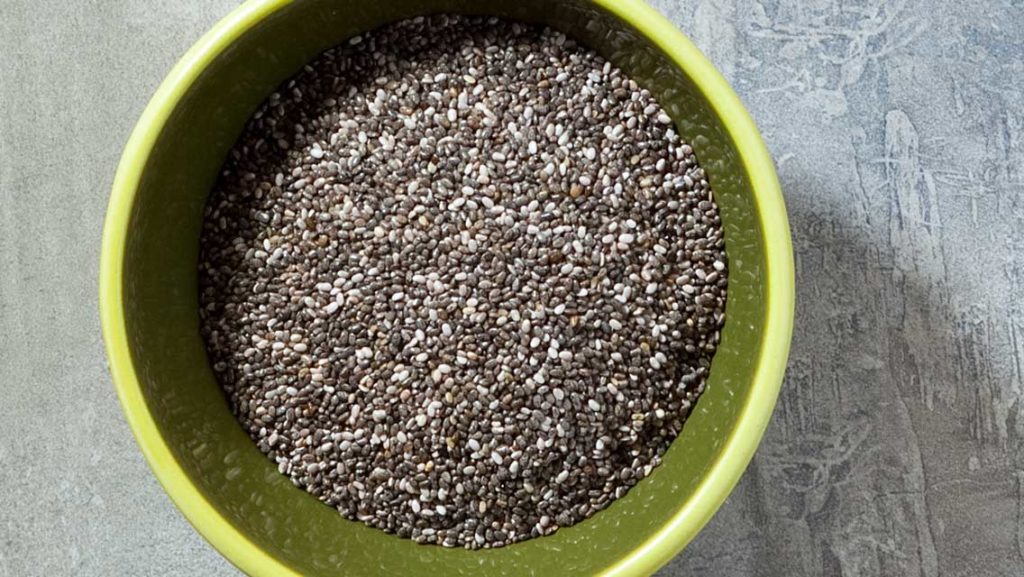
Mild and nutty, chia seeds — which have more antioxidants than blueberries — can be sprinkled in or on just about anything: sauces, rice dishes, even drinks. Add water to chia seeds and they develop a gel-like texture that can be used as an egg replacement or stirred into oatmeal. You can also serve soaked chia seeds as a breakfast pudding topped with nuts and fruit. Chia seeds are high in omega-3s, as are flaxseeds. Soaking chia seeds for an hour releases the seeds’ betaine, an enzyme that aids digestion by breaking down proteins and fats. The fiber in sprouted chia seeds can help with bowel regularity and blood-sugar stabilization.
Pumpkin Seeds
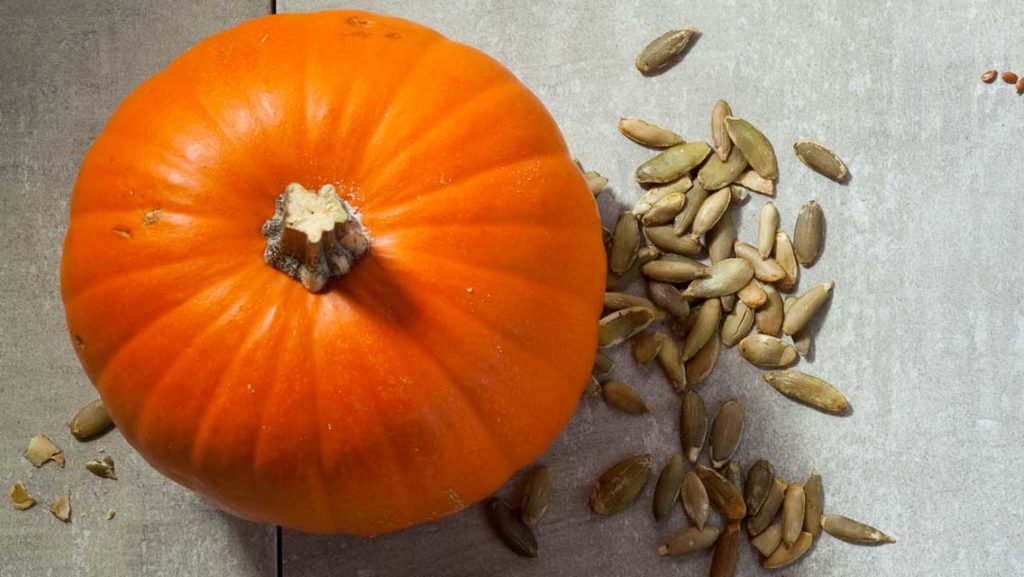
With a chewy texture and a sweet flavor, pumpkin seeds — also called pepitas — are best raw or dry roasted. Use pumpkin seeds in salads, sautés, or as a snack. Blend in a food processor with fresh herbs, garlic, extra-virgin olive oil, and lemon juice for a great dressing. Pumpkin seeds contain a uniquely rich blend of antioxidants, including multiple forms of vitamin E. A good source of B vitamins, magnesium, iron, and protein, as well as fatty acids that lower LDL cholesterol, pumpkin seeds support cardiovascular health. Eat the unshelled version to get the most zinc — it’s concentrated in the thin layer of the endosperm that’s pressed against the shell.
Flax Seeds
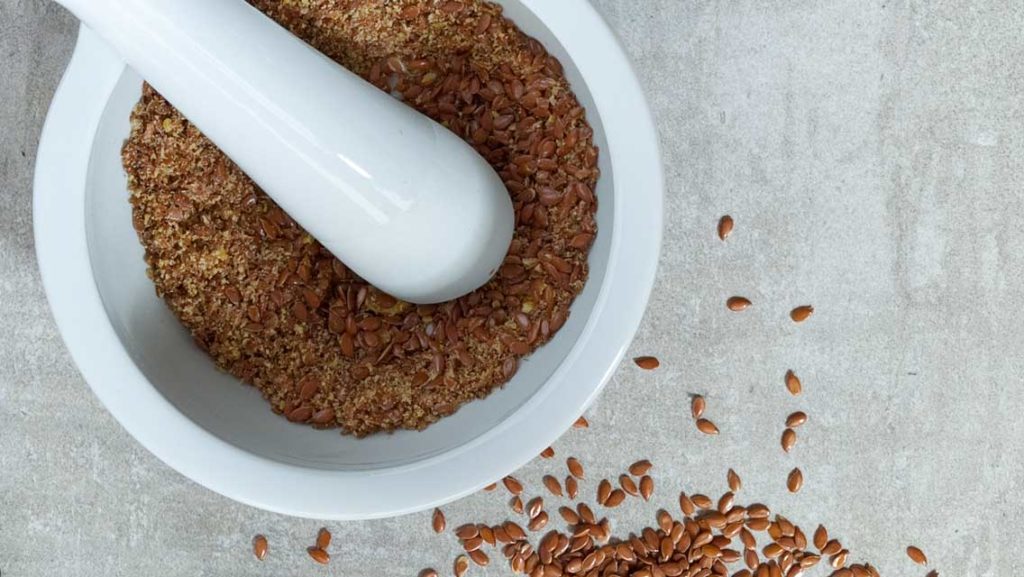
Flaxseeds have a nutty flavor that’s somewhat like wheat germ. Brown flaxseeds tend to be slightly more bitter than the golden variety. If flaxseeds aren’t ground, they can pass through your body without being digested; it’s best to buy them whole and grind in a blender or coffee grinder as needed. If you buy them already ground (or cracked or milled), store in the refrigerator or freezer. Ground flaxseeds are great sprinkled on grain-free cereals and salads or in smoothies (but drink up quickly because flax will thicken your drink). Flaxseeds are high in phytoestrogens called lignans and may help prevent breast, prostate, and colon cancers. One study found that menopausal women who ate 2 tablespoons of ground flaxseed twice daily experienced half the number of hot flashes. Sprouting flaxseeds releases more of their omega-3s and protein. Unlike other seeds, flaxseeds and chia have a much higher ratio of the great-for-you omega-3s than omega-6s. Omega-3s are extremely heat sensitive, so chia and flaxseeds should not be heated, cooked, or roasted at as high a heat as other seeds.
Sesame Seeds
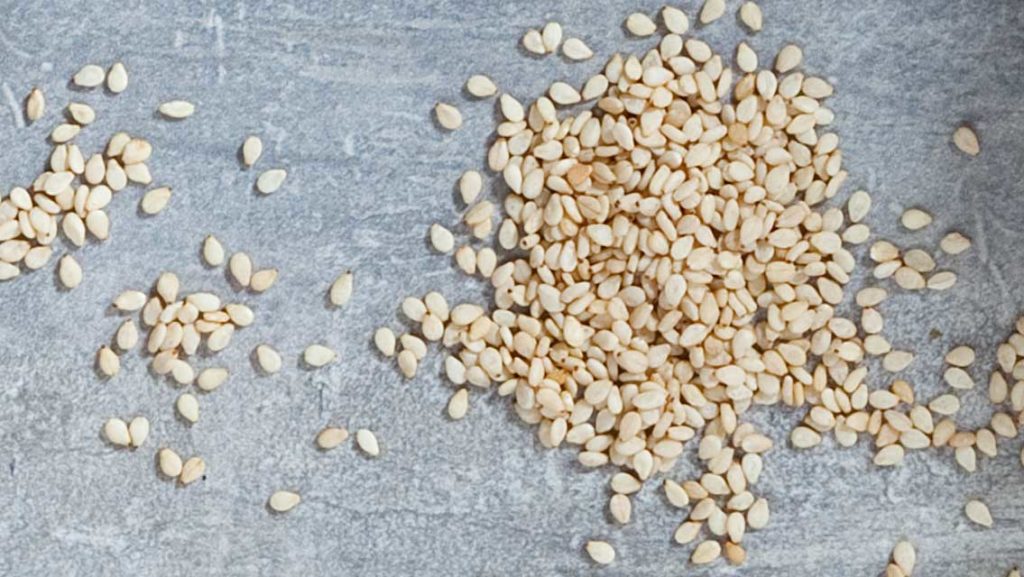
Sesame seeds have a light flavor and add a delicate crunch to dishes. Sprinkle them into batters for baked goods, stir-fries, or quiches. High in oil content, sesame seeds are the main ingredient in tahini, a smooth, creamy spread. Tahini tastes great on crackers or toasted bread and can be drizzled with honey or miso. Of all the common nuts and seeds, sesame seeds have the highest amount of phytosterols, which are believed to decrease the risk of certain cancers, lower cholesterol, and enhance immune response. These seeds also help lower blood pressure and protect the liver from toxic damage because they contain the plant hormones sesamin and sesamolin.
Sunflower Seeds
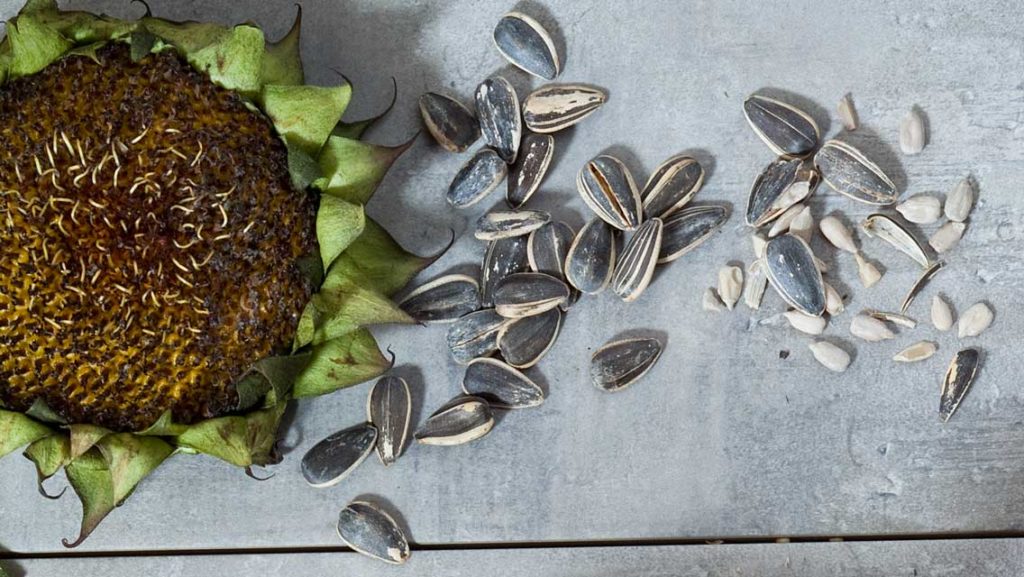
Firm yet tender, raw sunflower seeds can be eaten as a standalone snack or in trail mixes, salads, scrambled eggs, and stir-fries. When sprouted, they taste great in salads and sandwiches. Sunflower seeds are especially high in B vitamins, which support the immune system. Also extremely high in the antioxidant vitamin E, they help protect cells, maintain healthy skin and hair, and prevent cancer. On top of that, sunflower seeds’ selenium helps inhibit cancer cells and repair damaged cells.
Quick and Easy
Soups and Stews: Simmer whole seeds, ground seeds, or seed butter — such as sunflower seeds or tahini — in stock and then blend; stir into soups to add a thick, creamy texture without using dairy or flour.
Egg Substitute: For vegan baking, mix ground chia or flaxseeds with water and use in place of the eggs called for in recipes. To replace one egg, soak 1 tablespoon ground chia or flaxseeds in 3 tablespoons warm water for at least five minutes.
Recipes
Seed-y Crackers
Serve these crunchy crackers with your favorite cheeses, dips, and veggies. For a change, add 1/2 cup grated Parmesan cheese.
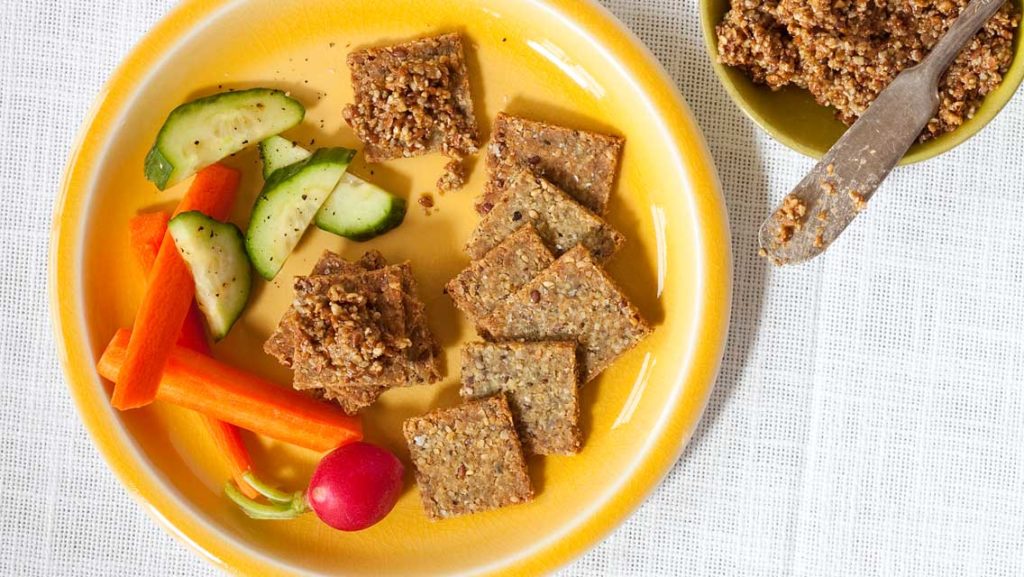
Makes | nine dozen crackers
Ingredients
- 1/2 cup brown rice flour, plus 2 tbs. for rolling out crackers
- 1 cup pumpkin or sunflower seeds, or a combination
- 4 tbs. ground flaxseeds
- 1 tbs. nutritional yeast
- 1/4 cup water
- 1 tbs. extra-virgin olive oil
- 1/4 cup sesame, chia, or flaxseeds, or a combination
- 1 tsp. chopped fresh rosemary
- 1/2 tsp. freshly ground black pepper
- 1/2 tsp. sea salt
Directions
- Preheat oven to 350 degrees F and line a baking sheet with parchment paper.
- Blend the flour, pumpkin seeds, and ground flaxseeds in a food processor to create a coarse flour. Pulse in the nutritional yeast, and then blend in the water and oil.
- When the dough starts forming a cohesive mass, pulse in the remaining seeds and seasonings, and form the dough into a smooth ball.
- Divide dough into eight balls. Roll out one ball at a time on a well-floured board with a rolling pin dusted with flour. Roll dough to a thickness of 1/8 inch or thinner and cut into 1-inch squares with a pizza cutter.
- Arrange on the baking sheet; sprinkle with a little more sea salt if you like.
- Bake for 15 to 18 minutes or until golden brown.
- Allow to cool, then store in an airtight container for up to a week.
Seed Butter
Make a peanut-butter alternative with your favorite seeds. Roasting the seeds before blending gives the butter a lovely flavor and color. You could try adding a dash of cinnamon or cocoa powder if you like.
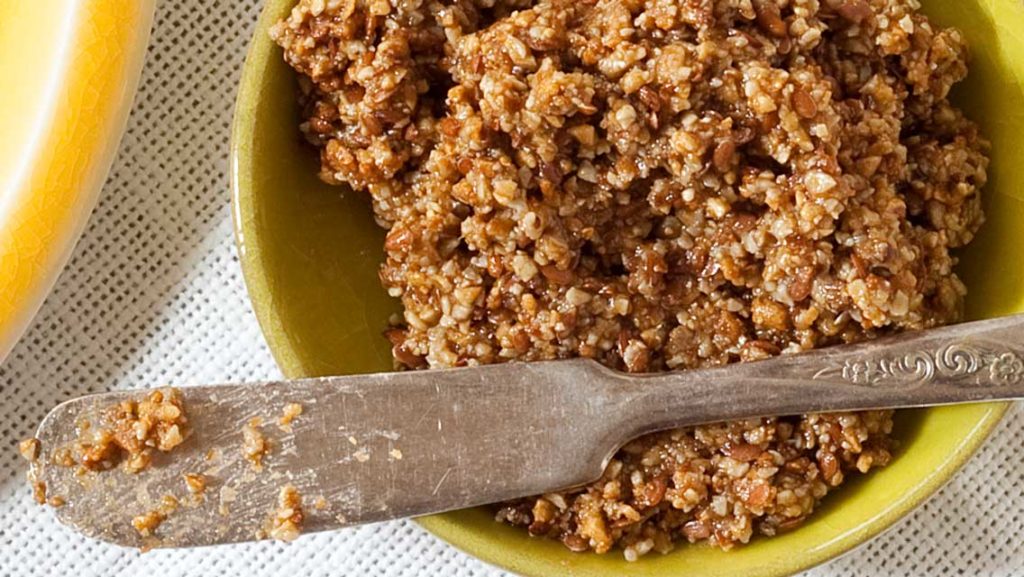
Makes | 2 cups
Ingredients
- 2 cups sunflower, pumpkin, or sesame seeds
- 3 tbs. coconut oil
- 1 tbs. flax oil
- 1 tsp. to 1 tbs. honey or maple syrup, to taste
- 1/2 to 1 tsp. sea salt
- 1/4 cup flaxseeds
Directions
- Pulse the 2 cups of seeds together in a food processor until finely ground.
- Blend in the oils, honey, and salt, and mix until the butter is as smooth as you would like it to be. You may need to add more oil, depending on the combination of seeds you use.
- Pulse in the flaxseeds, and store the seed butter in a jar in the refrigerator until ready to use.
Spring Spinach and Leek Soup
Blending seeds into soups and stews adds a naturally creamy quality to the dish. This soup is delicious served warm or chilled.

Makes | four servings
Ingredients
- 1 tbs. extra-virgin olive oil
- 4 leeks, chopped and washed (about 2 cups)
- 3 stalks celery, chopped (about 1 cup)
- 3 cloves garlic, sliced
- 1/2 cup sunflower seeds
- 1 cup coarsely chopped Italian parsley
- 4 cups vegetable stock
- 4 cups coarsely chopped fresh spinach, packed
- Salt and freshly ground black pepper
- 6 radishes, sliced thin
- 3 ounces chèvre
Directions
- Heat the oil in a large saucepan, and sauté the leeks and celery until almost tender. Add the garlic and seeds, and sauté for another five minutes, then add the parsley and stock.
- Cover and simmer over low heat until the vegetables are tender.
- Add the spinach and cook for just a couple of minutes.
- Purée the soup until smooth, and season with salt and pepper to taste.
- Ladle into soup bowls and garnish each bowl with the radishes and chèvre.
Pork Loin With Mole Verde
Serve this traditional piquant dish over brown rice or with sprouted tortillas.

Makes | four to six servings
Ingredients
- 1 tsp. plus 1 tbs. extra-virgin olive oil
- 1 medium onion, roughly chopped
- 6 tomatillos, husked, halved, and cored
- 4 cloves garlic, peeled
- 1 to 2 jalapeño peppers, halved
- 1/2 cup raw shelled pumpkin seeds, plus 1/4 cup for garnish
- 1 tsp. whole cumin seeds
- 1/2 tsp. dried oregano
- 1 cup coarsely chopped cilantro, plus 1/2 cup for garnish
- 1/2 tsp. salt, or to taste
- 1 pound pork loin roast, cubed
Directions
- Preheat oven to 450 degrees F and lightly oil a baking sheet with 1 teaspoon olive oil.
- Arrange onion, tomatillos, garlic, and jalapeños on the baking sheet and roast until softened, about 20 to 25 minutes.
- Toast the pumpkin and cumin seeds in a dry skillet for three to five minutes.
- Blend together with the roasted veggies, oregano, cilantro, and salt. (For a more rustic approach, skip the blender and simply mix the mole ingredients together.)
- Heat the remaining tablespoon of olive oil in a large saucepan, and sear the pork on all sides.
- Add the tomatillo sauce and simmer for about 20 minutes over low heat until the pork is cooked through (145 degrees F), stirring occasionally.
- Garnish with reserved pumpkin seeds and cilantro.
Strawberry-Rhubarb Crisp
Experiment with this recipe by trying other berries or fruits and different combinations of seeds. (If you decide to skip the rhubarb and use all berries, you can cut down on the sugar.) Serve warm with a drizzle of Greek yogurt or a scoop of ice cream.

Makes | six servings
Ingredients
- 3 cups hulled and halved strawberries
- 2 cups trimmed and chopped rhubarb
- 1/2 cup sugar
- 1 tsp. potato starch
- 1 cup sunflower seeds (or a combination of sunflower, hemp, pumpkin, sesame, and chia)
- 1/4 cup maple syrup
- 1/8 tsp. salt
- 1/4 tsp. cinnamon
- 1/2 cup rolled oats, brown rice flakes, or quinoa flakes
- 1/4 cup whole golden flaxseeds
Directions
- Preheat the oven to 350 degrees F.
- Toss together the fruit, sugar, and potato starch in a 1-quart baking dish.
- Blend the sunflower seeds with the maple syrup, salt, and cinnamon in a food processor until smooth. Pulse in the rolled oats and flaxseeds.
- Crumble the seed topping over the fruit and bake for 25 to 30 minutes until filling is bubbling and the topping is browned.
This article originally appeared as “Seeds, Glorious Seeds” in the April 2014 issue of Experience Life.
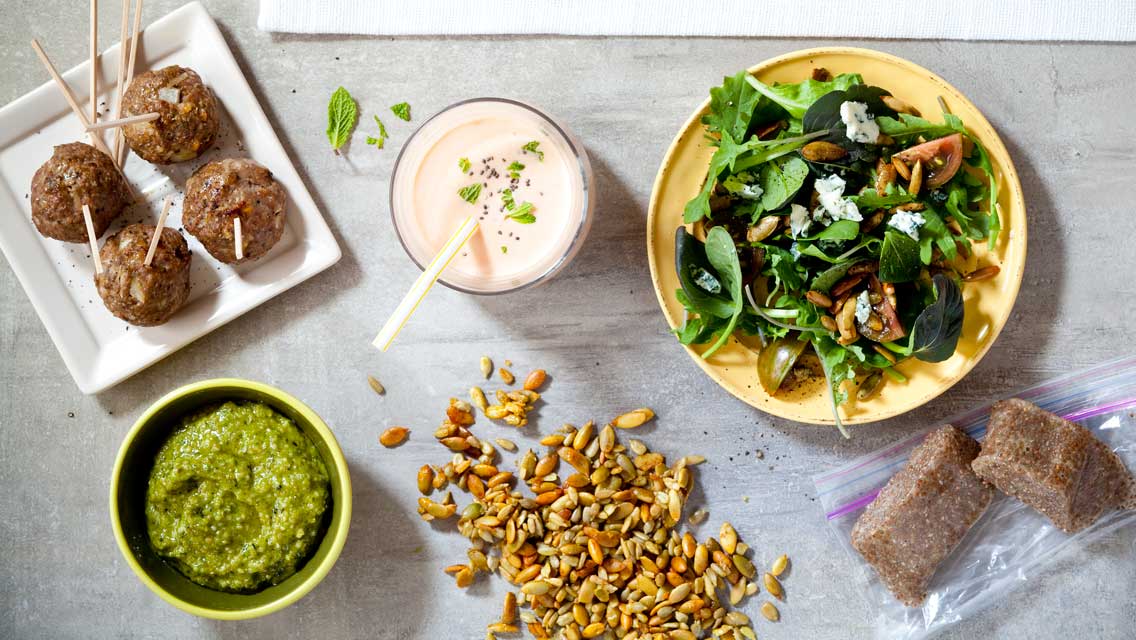
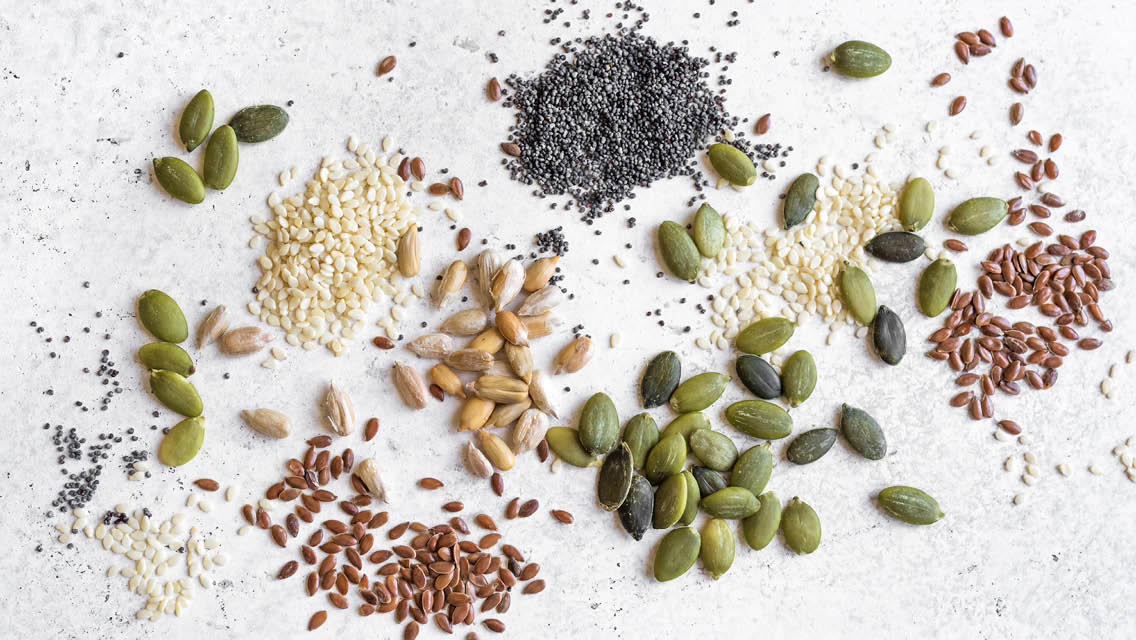
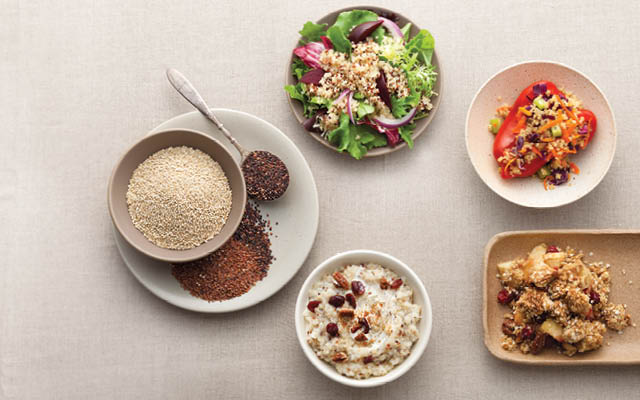
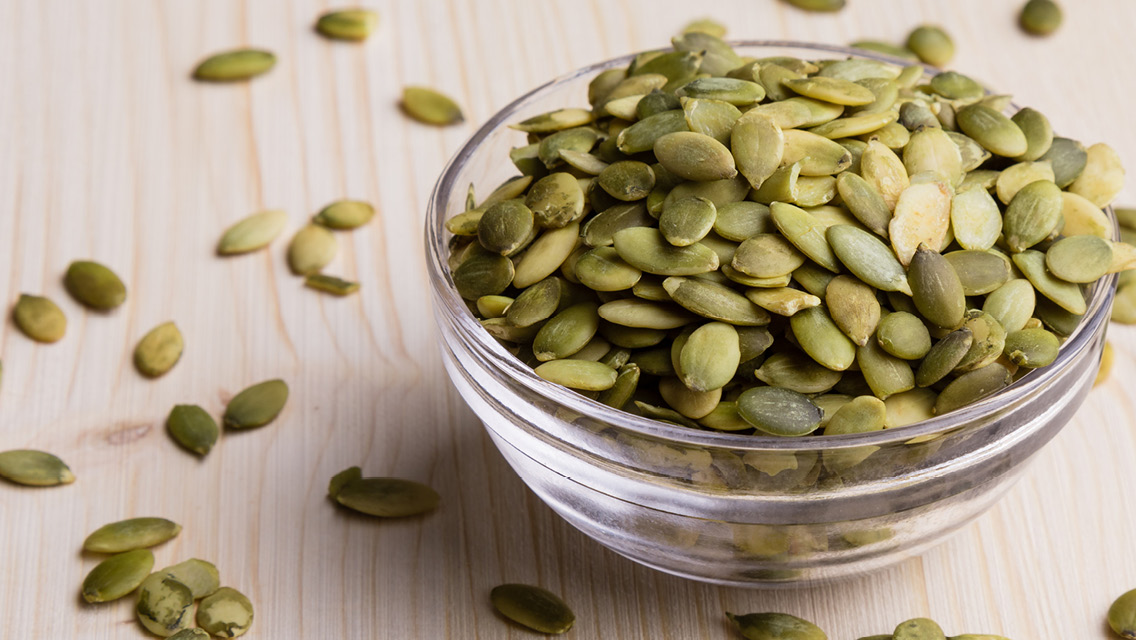
This Post Has 0 Comments